Last updated: April 24, 2023
Article
50 Nifty Finds #23: Second Wind
Many people begin second careers later in life, but few can claim to have defined a professional field and influenced how generations of National Park Service (NPS) visitors experienced parks in the process. Freeman Tilden was 59 when he turned his attention to national parks. He is widely regarded as the father of interpretation and is still held in high esteem. Even as interpretive practices have evolved and the NPS has moved towards audience-centered interpretation, the practice of eliciting participation and contributions from an audience to build mutual learning, Tilden’s foundational work remains relevant to the field today.
Tilden is also an example of an employee who made groundbreaking contributions to the NPS without ever wearing the “green and gray” uniform. The NPS History Collection includes some iconic objects owned by Tilden, as well as documents, photographs, and recordings that represent his contributions to the NPS. Like most museum objects, they also urge us to dig deeper and learn more about the stories behind them.
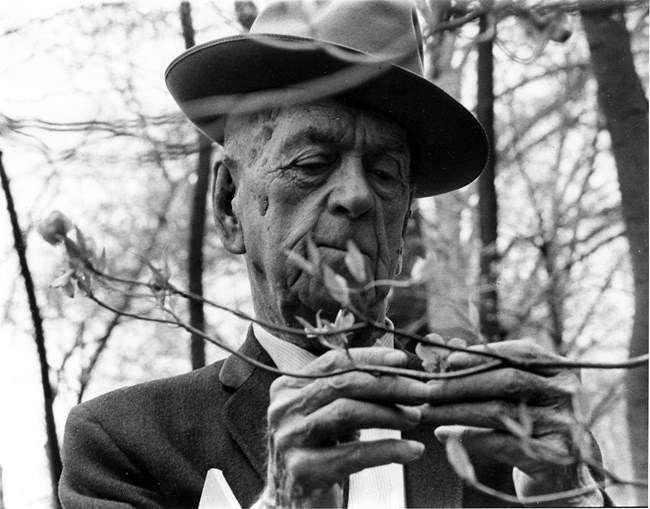
A Formative Childhood
Samuel Jones Tilden and Millicent Green Dalton married in 1864 in Charlestown, Massachusetts, while the nation was still embroiled in the Civil War. They had nine children in 25 years: Samuel, John, Millicent (died age 4), Mabel (died age 6), Maud, Benjamin (died age 10), Edith, Freeman, and Charlotte. Freeman was born on August 22, 1883, in Malden, Massachusetts. He was named after his grandfather, Freeman Foster Tilden, who died before his birth.
Samuel Tilden was an editor for the Malden Mirror before serving as editor of the Malden News for 15 years. Some authors state that Freeman began writing book reviews for the paper when he was 10 years old, but that hasn't been substantiated. He did grow up in his father’s office, learning to write and set type. Sometime before he was 16, Tilden wrote, set, printed, and bound a book of fairy stories for his sisters. He also created a monthly newspaper called Humor, which ran for about a year, funded by advertising money he chased down himself.
It's been reported that Tilden was educated by private tutors, and he may have been. However, he graduated from Malden High School in June 1901. He served as the editor of the school newspaper and read the class history during the graduation ceremony.
His poem “Pussy Willow” was published in The Transcript in 1901 and republished in the Boston Evening Transcript, where his father was then working. The Transcript also published several of his other poems.
From Facts to Fiction
Frank Bayrd, business manager of the Malden News, hired Tilden at $2 per week to work in the office around 1901. Eventually a dispute over his pay (when he was shorted by a penny) caused him to leave that paper. His father wrote a letter of reference for him to the Boston Globe.
Tilden was hired by the Globe as an office boy when he was 19. He quickly advanced to elevator operator, then copy boy on the Globe night desk. He began editing copy and then wrote his own. Before long he was hired to cover court proceedings and the police blotter in Everett, just north of Boston.
Growing restless, an aunt paid for him to go to Europe in 1903 when he was 21 years old. Although nothing is known about his time there, his passport application lists his job as journalist and notes his intention to return by December 1904. When he came back, he got a job with the Boston Herald. That job was short-lived when, after a story assignment that ended with a woman and the lamp in her hand falling down the stairs onto him, he had too much to drink and “tried to beat the city editor over the head with a broom.”
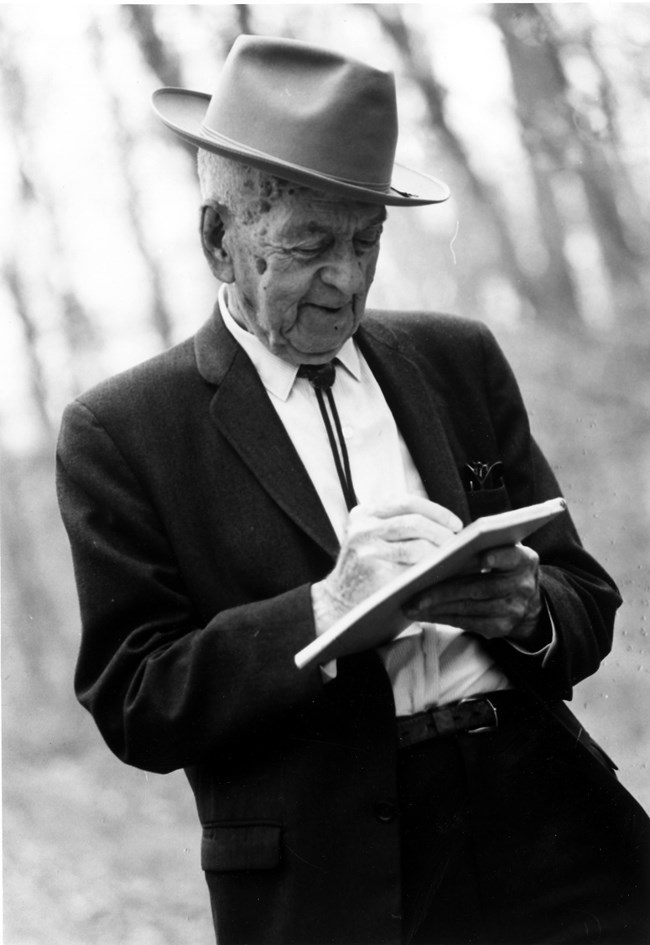
In 1905 Tilden became an editorial writer for the Charleston News and Courier in South Carolina. He sold materials to the New York Evening Post and was offered a staff position with that paper in 1907. He lived briefly in Helicon Home Colony, a whites-only enclave created in Englewood, New Jersey by writer Upton Sinclair with the money he earned from The Jungle. The enclave burned down in March 1907 under mysterious circumstances.
After meeting the editor of Van Norden’s magazine, Tilden was convinced to go to South America in October 1907 to write newspaper articles. After he arrived in Buenos Aires, Argentina, the magazine got into financial trouble. Since he wasn’t being paid, Tilden got a job with the English newspaper The Standard in Buenos Aires. He continued to have serendipitous encounters that led him from several cities in Argentina, on a trip across the Andes, and to Lima, Peru. After a street fight with a shipmaster (and apparently, no hard feelings), he joined him on a voyage to Antwerp, Belgium, before returning home.
Back in the United States, from 1908 through 1913 he contributed to the Boston Globe’s issue debates, expressing views on topics such as the state’s right to punish criminals, vegetarianism, whether a college education educates, women’s lack of manners, if the back-to-the-land movement was a fad, why men do or don’t shave, if the state should protect wild game for hunting, if women dress to attract men, and the use of slang language. Tilden also took a job writing copy for a cream separator company in 1908. A 1923 newspaper profile of Tildent noted, “His job was to slam the opposing [cream separator] company in print as hard and as often as possible.” Increasingly, Tilden began to focus on writing fiction.
A Family of Nomads
Tilden married Mabel Sara Martin, a schoolteacher, on October 9, 1909, in Ludlow, Vermont. At the time, he was the editor for the newspaper published by the Vermont Farm Machine Company. Together they had four children: Millicent “Bud” (1910), Jane (1913), Paul “Mason” (1916), and Freeman, Jr (1919). Mason Tilden grew up to become editor of National Parks and Conservation Magazine from 1959 to 1969 and associate editor from 1971 until his death in 1973.
The 1910 US Census places them in the Bronx, New York City. An unverified source reports that he was living in London that year, as a correspondent for the Daily Sketch, a conservative tabloid founded in Manchester, England, in 1909. He continued to publish opinion pieces and stories. The Boston Globe published his articles “Back to the Soil” (1910) and “The Good Old Days” (1912).
His fictional stories were serialized in newspapers and appeared in magazines such as Saturday Evening Post, Every Week, The Century, Puck, Country Gentleman, Ladies’ Home Journal, and Munsey’s Magazine. He also wrote fiction for Smart Set, called the “magazine of cleverness.” Examples of his short stories, many of which are available today on the internet, include “The Hero” (1911), “When He Came Home” (1912), “The Necessity for Remaining Dead” (1912), “The Yes-Man” (1914), “The Georgia Song-Bird” (1914), “The Lesser Fleas” (1915), “Mr. Clupp and the Adding-Machine” (1915), “The Rescue Business” (1916), “The Sanitary Hermit” (1916), “The Man in the Stone House” (1916), “Knowledge is Power” (1916), “Old Man Crabtree” (1917), “Her Own Business” (1917), “A Picture of Innocence” (1917), “The Dear Old Homestead” (1918), and “Percival’s Petroleum Pageant” (1919).
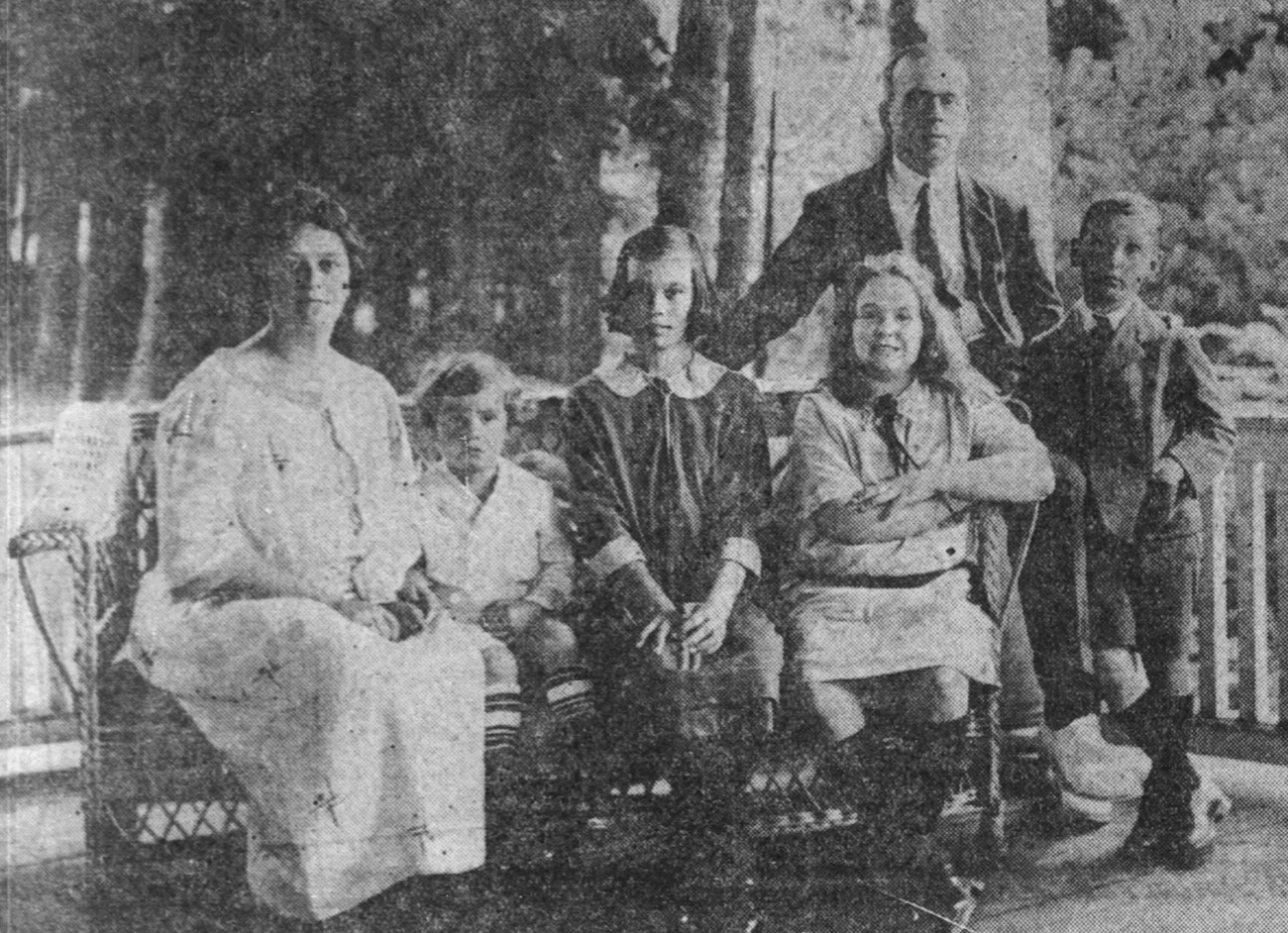
Tilden’s wide-ranging talents extended to translating a book of French plays into English in 1913. In 1914, when the Tildens were living in Oakham, Massachusetts, he won Puck magazine’s first $100 prize for the most humorous contribution of the week. The magazine published his winning story, “The Bounding Billiardist,” the next week. That same year the magazine published his commentary on yodeling (which he disliked). His story “Housework—and the Man” (1915) won one of Life Magazine’s short story contests (it was later republished in the book Short Stories from Life in 1919). His book That Night and Other Satires was also published in 1915. His publisher declared him “the greatest living master of satire in America” (although others disputed that claim). Of his war novel Khaki: How Tredick Got into the War (1918), the New York Tribune wrote, “A novel of extraordinary merit…we earnestly wish that every man and woman in America might read it and be inspired by its all-compelling patriotism.”
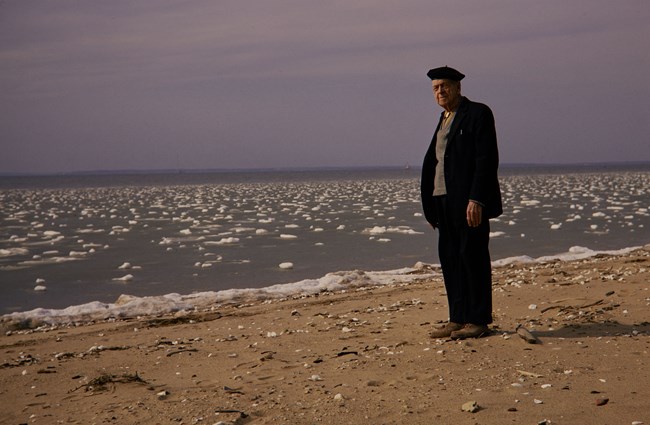
The Tildens led a nomadic life in the 1910s and 1920s, moving frequently. They often lived out of doors in the summer, moving into houses in the winter. During the cold winter of 1918, however, they moved to Fairhope, Alabama, an enclave created based on the single-tax theories of economist, journalist, and social reformer Henry George. The people he met at Fairhope inspired his bestselling 1923 novel Mr. Podd. Royalties from the first year of book sales allowed the family to buy a car.
His play Five O’Clock, a “comedy of youth” co-written with Frank Bacon, opened on Broadway at the Fulton Theater on October 13, 1919. It was based on Tilden’s story “The Defective” from That Night. One reviewer gushed, “The dialogue is brilliant and snappy, with clean-cut delightful comedy in every line” and “the plot is interesting with its many twists and turns, creating scenes and climaxes which display the ingenuity of the authors.” Tilden also wrote the play The Customary Two Weeks (1919).
The 1920 US Census places the family in Los Angeles, California. His industry is listed as “fiction.” He continued to write magazine articles and opinion pieces such as “What a Farmer Really Looks Like” (1921). He also traveled to Belgium and France that year. His article “The World League of Women Can Prevent Wars,” published by Ladies’ Home Journal in 1922, seems to have resulted from that trip. Also in 1922 he wrote the one-act play Enter Dora—Exit Dad at the request of Ladies’ Home Journal for the purpose of “providing something new and fresh.”
The family traveled to England in 1922. Tilden returned to England on his own in 1923 to look for land to purchase as the family considered an international move. In the end, they stayed in the United States. Following the success of Mr. Podd, his book Buckbarrow was published in 1924, when the family lived in Brattleboro, Vermont. The entire family returned to England for another visit that year.
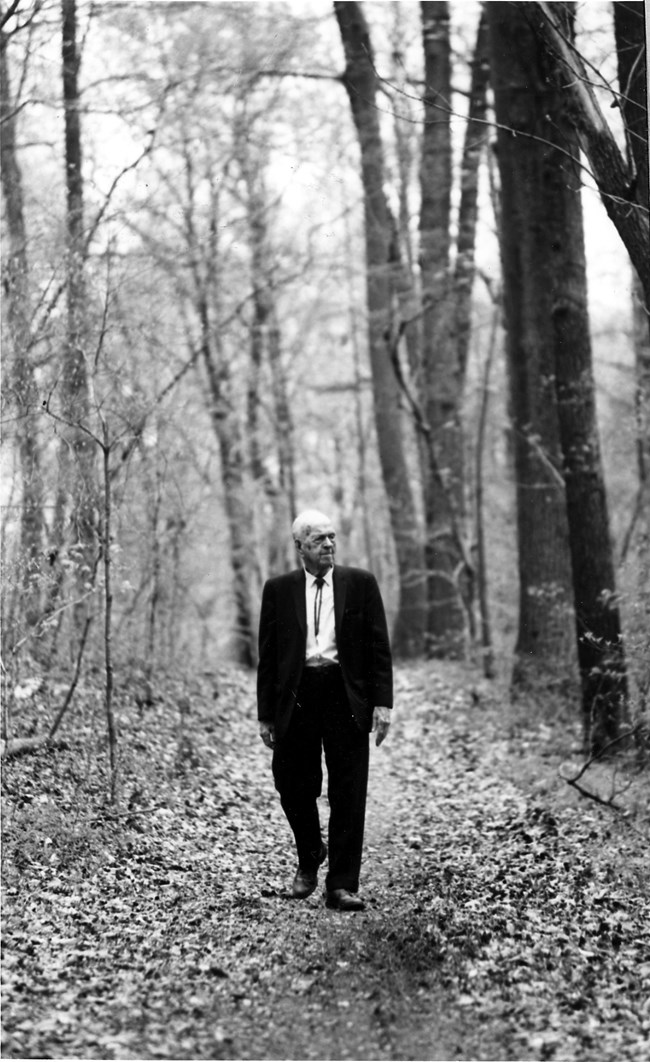
While Tilden was a prolific fiction writer in the 1910s and 1920s, in the 1930s he began writing non-fiction and became interested in travel writing. In 1931 he began a US tour, asking the questions “What makes a city interesting?” and “What are the most interesting cities?” and writing about his findings. In 1931–1932 he authored the script for The Golden State Family Robinson, a weekly radio travelog on the California state parks. He visited Europe again in 1931 and 1933, studying the economies of England, France, Germany, and Spain for his 1935 book A World In Debt, described as a powerful indictment of the debt system. He wrote the book while living in Santa Cruz, California. The North American Review published his articles “The New Ordeal” in February 1935 and “Does Posterity Pay?” in March 1936.
A 1936 newspaper article described him as “a mild-mannered man with a logical, analytical mind.” The family relocated to Santa Cruz, California, in 1936 and 1937. Tilden traveled around the United States in the late 1930s, promoting Debt, writing articles, and speaking to community groups on issues of economics and other topics. He became a sought-after speaker known for his humor and ability to get his audience roaring with laughter.
In 1939 he started his subscription newsletter called The Open Door, “a delightful, pocket-sized publication” that was a “happy outlet for Freeman’s informal, good-humored essays on every subject under the sun.” He was described as “subtle, witty, and plain spoken” even as he penned essays such as “The New York Influence—America’s Journalistic Poison” (1940).
By 1940 Tilden had written 17 books, 10 serials of book length, hundreds of newspaper and magazine articles, and a handful of plays and radio scripts. The proceeds of his writing allowed him to own a home in New Hampshire, spend winters at his ranch in New Mexico, and continue his nomadic ways living in different parts of the country for a year or two before moving on. By the time his novel Better See George was published on January 1, 1941, Tilden was looking for a change.
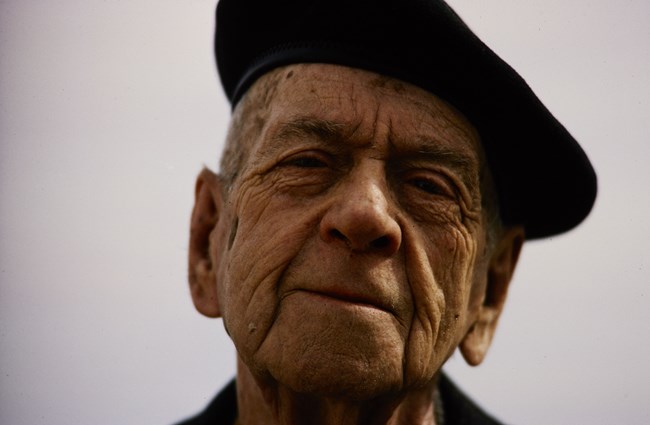
From Fiction to Facts
As Tilden told an audience at Texas A&M University when he was 87, his desire from change came from the realization that something was missing from his life. “I had removed myself from the natural world. My habits of life, although accepted by society, had developed into an unnatural pattern. I was working at night and seldom leaving the city-type environment.” He declared himself “through with my present type of existence.” He wanted to focus on facts.
Tilden reportedly had a chance meeting with NPS Director Newton B. Drury at the Players Club in Manhattan that led to his interest in national parks. It’s said that in 1941 he “confidently strode into Drury’s office” in Washington, DC and explained that he was tired of writing only to entertain and “wanted to write something serious.”
He was hired to serve as a literary consultant. Drury gave him the freedom to roam anywhere in the National Park System. He occasionally continued to write short stories for magazines and newspapers such as “Precious Metal” and “Back to Neighborship” in 1943. Soon, however, parks became his principal subject.
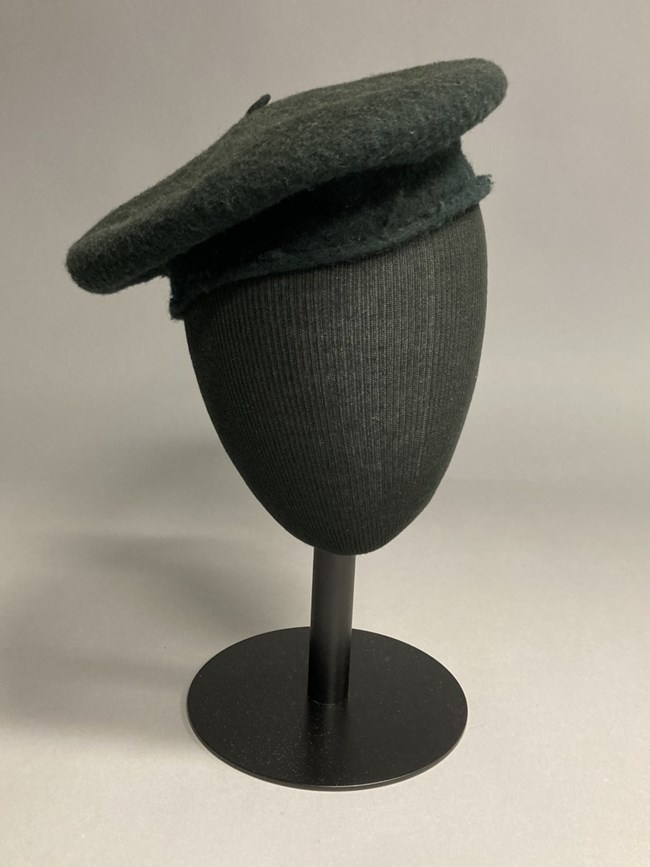
His first book about national parks, The Fifth Essence: An Invitation to Share Our Eternal Heritage, was funded by the National Park Trust Fund Board and published in 1950. The next year Alfred A. Knopf published Tilden’s The National Parks: What they Mean to You and Me. It was reviewed and promoted in newspapers throughout the 1950s. Knopf described it as “the best book ever written” on the national parks. Tilden enlarged the book for its second edition in 1968, writing that, “I want to introduce a word not yet in common usage. The word is ‘ecology.’”
Although his earlier books brought the national parks to the people, it was his 1957 book Interpreting Our Heritage that came to define the profession of interpretation. In it he identified the six principles that became the foundation of the field for the next 40 years.
In 1958 Jackson Hole Preserve, Inc. donated $23,000 to the NPS so that Tilden could spend two years studying state parks and then write “an authoritative account of state park programs [to] increase the public understanding of the program’s objectives.” The resulting book, The State Parks, Their Meaning in American Life, was published in 1962.
That same year, the NPS suggested Tilden for the prestigious Puglsey Award. The nomination noted,
Through his studies and writings, Mr. Tilden has exerted an exceptional influence of the park conservation programs of this country by providing a widespread understanding of the purposes and objectives of national and state parks and the principles governing their selection, establishment, and administration. His unique and pioneering work on interpretation has met with acclaim from national, state, and local park authorities and organizations and individuals concerned with park administration.
Tilden’s wife Mabel died suddenly in November 1962 in Georgia when they were on their way to Florida. She didn’t live to see him get the award. His book Following the Frontier with F. Jay Haynes, Pioneer Photographer of the Old West was published in 1964.

In 1970 NPS Director George B. Hartzog, Jr. sent 87-year-old Tilden on an 11-month trip around the NPS. In a job that seems both enviable and impossible to get today, he was accompanied by student-trainee Walt Dabney (who went on to become a park ranger, superintendent, and NPS chief ranger during his 30-year career) as he visited more than 50 park sites. His book Who Am I? was the result of that trip, published by the NPS in 1975. He reportedly told Dabney:
I’ve been working on the concepts of interpretation for about twenty-five years, and I still don’t know what the hell it is, though I’ve got some ideas, and I’ve written a lot of definitions. But I was never completely satisfied with them. It’s something individual, something that comes from the knowledge and doing, but you’ve got to feel it. It’s not just relating facts, but making facts live and tell a story.
Tilden retired from the NPS in June 1971 when he was 88 years old. After his retirement he wrote to Bill Everhart, “I shall always be glad to serve the NPS whenever I am called upon to do so, within my capacity, and without fee. I need not tell you that the Service is very dear to me. My association with it is the finest part of the writing career.”
Tilden did go on to write the text for two NPS brochures. “Yellowstone: The Flowering of an Idea” was created for the park’s centennial in 1972. He wrote a new Yorktown brochure for the 1976 bicentennial.
When he was in his 80s, someone asked him about the secret to his longevity. He replied, “It was probably due to the brilliant letters I had written, and decided not to send, and the smart things I almost said, but decided to refrain.” At 90 he put more emphasis on “good genes, physical sluggishness (which passes for temperance), and luck.”
Tilden suffered a stroke in 1979. He died on May 13, 1980, at the age of 96, in Nashua, New Hampshire. After his passing, NPS Director Russell E. Dickenson sent a memo to all NPS employees calling him, “our longtime friend, teacher, and colleague.”
NPS colleague James V. Murfin recalled his friend noting,
The human touch, the twinkle in his eye, the friendly greeting as though he had always known you, the charm with the ladies, his pluckiness with male comrades. He was the master of the "put-on" and the "put-down." His targets were always those he knew and loved and though he seldom cracked a smile while doing it, he could convulse you in one breath and then in another, gently, oh so gently, absolutely devastate you. He was a humble man, not vain, but he loved being the center of attention. He had something to say to all—young and old—and he was happiest when he had an audience.
Although some aspects of his story may raise an eyebrow today, those who knew and worked with him always spoke highly of him, relished his sense of humor, and appreciated his contributions to the NPS and the field of interpretation.
In 1981 the NPS and the National Parks and Conservation Association established the Freeman Tilden Awards for Excellence in Interpretation and Education. Still awarded annually, it recognizes an individual and a team for excellence, achievement, and innovation in the profession of interpretation, education, and visitor engagement while rewarding creative thinking that results in positive impacts upon the preservation of the parks and the visiting public.
Sources:
--. (1901, June 27). “Malden High Graduates.” The Boston Post (Boston, Massachusetts), p. 2.
--. (1094, January 21). “Friends of Malden ‘Oracle’ Think Suspension High-Handed.” The Boston Post (Boston, Massachusetts), p. 2.
--. (1909, September 4). “Filled with Good Reading.” The Boston Globe (Boston, Massachusetts), p. 7.
--. (1912, September 7). “Rich if Fiction Stories.” The Boston Globe (Boston, Massachusetts), p.7.
--. (1914, July 11). “Puck’s $100 Prize Awarded.” Puck Magazine, Puck Publishing Company, p. 3.

--. (1917, May 5). “A New American Satirist.” The Spectator, Vol. 118, p. 520.
--. (1918, July 19). “Brilliant New Novels.” Chicago Tribune (Chicago, Illinois), p. 10.
--. (1918, August 4). “Khaki.” Oakland Tribune (Oakland, California), p. 19.
--. (1918, November 11). “Samuel Tilden Dead.” Boston Post, (Boston, Massachusetts), p. 9.
--. (1918, December 8). “Bacon Writes Another.” Los Angeles Evening Express (Los Angeles, California), p. 35.
--. (1919, October 7). “David Higgins.” The Daily Record (Long Branch, New Jersey), p. 4.
--. (1919, October 8). “Leads Cast of ‘Five O’Clock’.” Ashbury Park Press (Ashbury Park, New Jersey), p. 7.
--. (1919, October 18). “Five O’Clock.” Hartford Courant (Harford, Connecticut), p. 19.
--. (1925, November 28). “What The Literary World Is Reading.” Brazilian American, p. 44.
--. (1927). “A Good Play.” Four-H Suggestions, Vol 9, No 10.
--. (1928, March 24). “Freeman Tilden’s New Novel an Exciting Tale.” The Boston Globe (Boston, Massachusetts), p. 5.
--. (1940, January 7). “Freeman Tilden Returns.” Santa Cruz Sentinel, p. 1.
--. (1940, January 7). “Freeman Tilden to Speak Here.” Santa Cruz Sentinel, p. 1.
--. (1958, August 23). “Freeman Tilden Retained to Write State Parks Report.” The Boston Globe (Boston, Massachusetts), p. 3.
--. (2023). “Fairhope Single-Tax Colony.” Accessed April 23, 2023 at http://beautifulfairhope.com/about/fairhope-single-tax-colony
Arthur, Anthony. (2006). Radical Innocent: Upton Sinclair. Random House.
Assembled Historic Records of the National Park Service (HFCA 1645). NPS History Collection, Harpers Ferry Center, WV.
Christian, Sutton. (1936, November 4). “A World in Debt by Freeman Tilden.” Santa Cruz Sentinel, p. 8.
Murfin, James V. (1980, June). “Freeman Tilden: A Celebration.” Courier: The National Park Service Newsletter, Vol 3, No 8, p. 18-19.
NPS Oral History Collection (HFCA 1817). NPS History Collection, Harpers Ferry Center, WV.
Robinson, George. (n.d.). “Freeman Tilden: 1883-1980.” Accessed April 21, 2023, at https://www.nps.gov/parkhistory/online_books/sontag/tilden.htm
Sibley, Frank P. (1923, September 2). “Mr. Podd Made Nozzles and So Freeman Tilden Made a Book.” The Boston Sunday Globe (Boston, Massachusetts), p. 61.
Tilden, Freeman. (1910, November 13). “Back to the Soil.” The Boston Globe (Boston, Massachusetts), p. 46.
Tilden, Freeman. (1914, June 20). “Yodeling.” Puck Magazine, Puck Publishing Company, p. 19.
Tilden, Freeman. (1914, July 25). “The Bounding Billiardist.” Puck Magazine, Puck Publishing Company, p. 18-21.
Tilden, Freeman. (1916, March 27). “The Man in the Stone House.” Buffalo Courier Magazine (Buffalo, New York).
Tilden, Freeman. (1926, December 18). “Housework—and the Man.” The Berkshire Eagle (Pittsfield, Massachusetts), p. 20.
